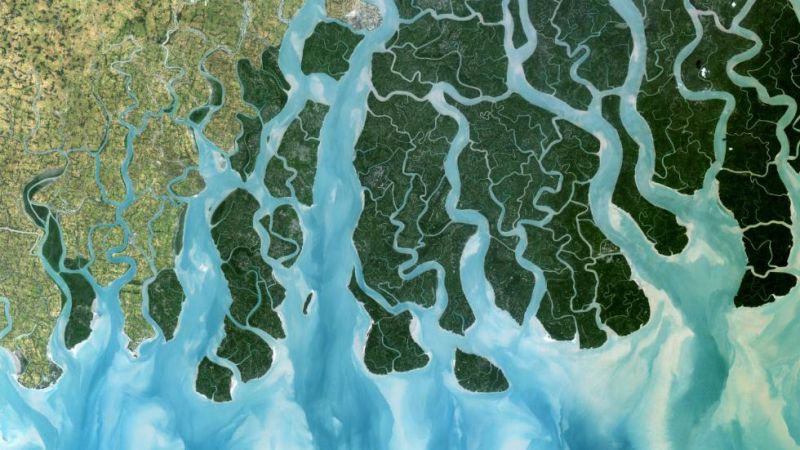Hidden Fault Beneath Ganges Delta Could Trigger 'Megaquake'
Published on by Water Network Research, Official research team of The Water Network in Academic
A massive, hidden fault hidden beneath the Ganges Delta could trigger a cataclysmic earthquake in Bangladesh and parts of east India and Myanmar, new research suggests.
A team of researchers from Columbia University found that the hidden fault, which lies buried under miles of river sediment, could produce an earthquake of magnitude 8.2 to 9.0 in one of the most densely populated regions of the world, according to Live Science.

Satellite image of the Ganges Delta, under which lies a hidden fault that scientists say could trigger a "megaquake" in Asia.(Getty Images/Planet Observer)
Because the fault was only recently discovered, the researchers say they are unable to determine at this point when a major earthquake along the fault might occur.
"We don't know if it's tomorrow or if it's not going to be for another 500 years," said study co-author Michael Steckler, a geophysicist at the Lamont-Doherty Earth Observatory at Columbia University in New York City.
The fault lies buried beneath the world's largest Delta where the Ganges and Brahmaputra rivers meet in Bangladesh before emptying into the Bay of Bengal. The flow of these two massive rivers deposits a gigaton of sediment every year, hiding the geology below, the researchers said, But in recent years, scientists have discovered tectonic plates colliding beneath the sediment.
Collaborative Efforts
To better understand the movement of the plates, the Columbia researchers teamed up with researchers at Dhaka University in Bangladesh to install ultra sensitive GPS devices throughout Bangladesh between 2003 and 2014. Combining the data retrieved from the GPS devices with plate-motion data collected from India and Myanmar, they created a map of the entire fault region.
According to the data collected, researchers determined that one plate is diving under the other deep beneath the surface of Bangladesh and parts of Myanmar and eastern India. They further determined that the two plates are stuck together in the upper layers of the fault, causing a dangerous build-up of pressure that at some point could give way, unleashing a major earthquake with a maximum magnitude of 8.2 to 9.0.
Vulnerable Area
This area of the world, with its poor construction standards, is particularly vulnerable to a major earthquake, the researchers warn. They estimate that about 140 million people live within 60 miles of the fault.
"I've seen them pumping sand to build up the ground level to build a 20-story building," Steckler told Live Science. "If there's an earthquake [that ground is] going to liquefy and the building is just going to fall over."
The sheer number of people living in the area could make rescues difficult, Steckler added.
"Right now, the streets are clogged with traffic such that it's impossible to drive around Dhaka on a normal day," Steckler said. "If you fill the streets with debris, it's really going to be impossible to get supplies and rescue equipment and things like that around."
Questions Loom
While researchers expect a major earthquake along the fault at some point, they do not know when that will occur because the historical evidence that might provide clues about the frequency of quakes in the area is hidden beneath the sediment.
They have been able to determine, however, that an earthquake occurred in 1762 further south from the study area and another that may have caused a major river between Bangladesh and Myanmar to switch the direction in which it flowed.
Source: The Weather Channel
Media
Taxonomy
- Scientific Research Services
- Earthquake Insurance
- Disasters & Risks
- Disaster Management
- Risk Analysis
1 Comment
-
Very interesting to see what comes of this research. It may play a vital role in terms of disaster planning when it comes to earthquakes and other natural disasters especially for more vulnerable populations living in low lying areas in the Ganges Delta. There is still so much we do not know and we are still learning and researching about when it comes to determining seismic risks, hazards and preparation but this is definitely a great step in the right direction.